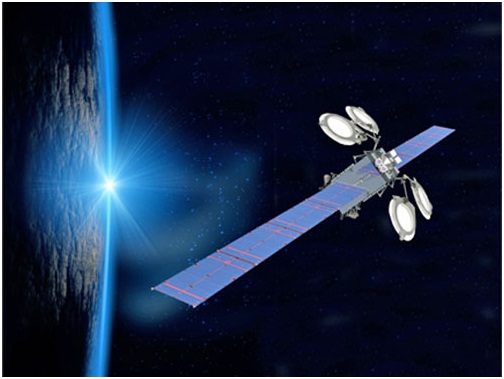Conventional propulsion systems for satellite and spacecraft maneuvering in space utilize some sort of combustive fuel to direct explosive products out of the rear of the vehicle to move it forward. Because there is no oxygen in space, these systems must combine a flammable substance with an oxidizer. There are liquid fuel systems such as liquid hydrogen as fuel and liquid oxygen as oxidizer. There are solid fuels where the fuel and oxidizer are powdered, mixed and pressed into solid masses. These systems are heavy, complex and dangerous. Recently a different type of propulsion system has been gaining in popularity.
Engines employing some sort of electrical effect have been suggested for over a hundred years as a viable means of space propulsion. There are several different types of systems that have been designed and tested. Ion thrusters ionized a gas and accelerate it with electrical fields to the rear of the engine where it is expelled from the back of the craft to provide thrust. Electrothermal thrusters utilizes electromagnetic fields to create a hot plasma which expands and is expelled from the rear of the engine to provide thrust. Electromagnetic thrusters accelerate ions to provide thrust but the direction of the field gradient is not in the same direction as the resulting acceleration.
These types of engines do not require large amounts of propellant but they also do not provide a great deal of thrust. They are best for long missions where the gentle thrust they do provide can added over time to produce significant acceleration. They also require energy for the electromagnetic effects employed. Near the sun, solar power may provide sufficient energy. For deep space missions away for the sun, power would likely be provided by either nuclear fission or nuclear fusion. NASA has employed ion thrusters for deep space missions.
In March of 2015, Boeing launched two Boeing 702 communications satellite which are the first commercial satellites propelled only by electromagnetic effects. They are powered by a Xenon Ion Propulsion System that is ten times more efficient than conventional liquid fuel propulsion systems. The Xenon ion thrusters are used for both station keeping and changing orbits. The 702SP satellites each weight about four thousand five hundred pounds and employ solar panels to generate between three and seven kilowatts of power to provide thrust. They only need eleven pounds of xenon per year for their four engines. They are about half the weight of comparable satellites employing conventional rockets for thrust. Launched aboard a Falcon 9 spacecraft, they were significantly cheaper than satellites with conventional propulsion systems. They will take about eight months to climb to their operational geosynchronous orbits.
The success of the new Boeing 702SP communication satellites performance has resulted in more orders for these satellites from Boeing customers. Other aerospace companies have reacted to Boeing success of the 702SP satellites by working on electromagnetic engines of their own. With their low weight and high efficiency, ion thrusters are destined to be a major component of space exploration and exploitation in the coming decades.
Boeing artist's concept of the 702SP:
